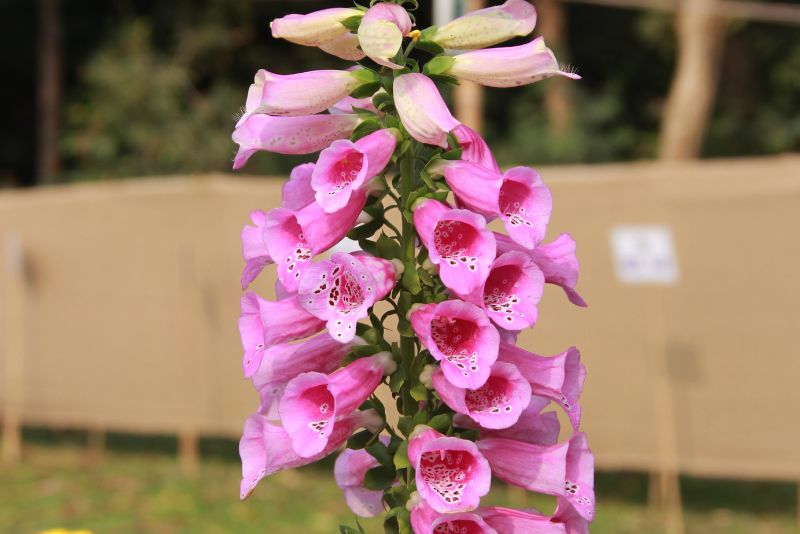Overwintering Foxgloves: A Gardener’s Guide to Cold-Weather Care
As winter turns the vibrant colors of our gardens into a palette of whites and greys, it’s easy to think that the life in our outdoor spaces has come to a pause. But for avid gardeners and lovers of foxgloves, the onset of cold weather signals the beginning of a crucial seasonal practice: overwintering. This process isn’t just about survival; it’s about ensuring your flowers emerge in spring with the vigor to thrive and bloom. In this comprehensive guide, we’ll show you how to tuck your foxgloves in for the winter and ensure a triumphant return at the first signs of spring.
Understanding Foxgloves: Getting to Know Your Perennial Beauties

The Beauty of Foxgloves
There’s a certain majesty to foxgloves that makes them a standout in any garden. With their tall spikes and tubular flowers — often purple, but available in a range of hues — they add a wild, almost fairytale charm to their surroundings. Yet beneath their enchanting appearance lies a hardy core, ready to withstand winter’s icy grip.
Foxgloves Through the Seasons
Foxgloves are biennials or short-lived perennials, which means they have a two-year life cycle. The first year, they produce a basal rosette of leaves, and in their second year, they send up their characteristic flower spikes. Overwintering the plants between these stages is key to promoting longevity and encouraging natural seeding processes in your garden.
Preparing Foxgloves for Winter: The Pre-Hibernation Checklist
Soil Preparation
As autumn turns to winter, the soil is where the groundwork for a successful foxglove overwinter takes place. Well-draining, nutrient-rich soil is essential. Prepare the beds with compost or well-rotted manure to help the plants establish strong roots that can absorb water even in frozen grounds.
Mulching Techniques
A good mulch layer is like a thermal blanket for your foxgloves. Apply a layer of 2 to 3 inches of mulch, such as straw, pine needles, or wood chips, around the base of the plants. Mulch helps retain moisture, regulate soil temperature, and protect against sudden temperature fluctuations that can be detrimental to your garden.
Pruning Tips
Pruning signals to the foxgloves that it’s time to slow down and prepare for the colder months. Trim back dying foliage, but be sure to leave the healthy leaves intact; they’ll continue to provide nourishment and energy to the plant throughout the winter.
Protecting Foxgloves from Harsh Conditions: It’s a Nature vs. Nurture Battle
Frost Protection Methods
When the first frost threatens, you can fight back with some simple strategies. Covering your plants with burlap or floating row covers can help them retain warmth and protect them from frostbite. Remove these covers during warmer spells to encourage air circulation.
Sheltering Strategies
For potted foxgloves, consider bringing them indoors to a cool, dark place, like a garage or a basement, ensuring they still receive a few hours of indirect sunlight. This sheltering can make the difference for more delicate species.
Maintenance During Winter: Keeping a Watchful Eye Over Your Plants
Monitoring Soil Moisture
Dry winter weather can be as hard on plants as the cold. Check the soil moisture periodically and water if the soil is dry to a depth of an inch. Avoid overwatering, as water-logged roots can rot in the winter. A balance is key, especially for foxgloves, which prefer damp soil conditions.
Inspecting for Pests and Diseases
Winter isn’t just tough on plants; it also takes a toll on their defenses. Regularly inspect your foxgloves for signs of pests, like aphids, or infections, especially fungal diseases. Early detection and action can prevent issues from taking hold and ensure your plants emerge healthy in the spring.
Spring Care and Revival: Reawakening Your Foxgloves
Post-Winter Rejuvenation Steps
As the earth starts to thaw, it’s time to give your foxgloves a little encouragement. Gently rake away the mulch, and trim back any remaining old growth. This will expose the new growth to the light and air, stimulating the resumption of their life cycle.
Stimulating Growth and Blooming
To give your foxgloves a head start on the growing season, consider adding a balanced, slow-release fertilizer to the soil. This will provide the necessary nutrients for the second year of the cycle, when your plants will focus on reaching their full height and producing their splendid bloom.
Conclusion: A Little Effort Yields Spring Splendor
A Final Look at Your Dutiful Foxgloves
Caring for your foxgloves during the winter is a gesture of appreciation for the joy they bring to your garden. As you look out over your patch during these quiet months, know that the patience and attentiveness you’ve shown will be repaid with a burst of color and life when the season turns.
Encouragement for the Entire Gardening Journey
Remember, while the spotlight may be on overwintering foxgloves in this post, the mentalities and techniques discussed can be extended to care for your full garden. Each plant has its own winter needs and understanding them is the gateway to year-round gardening success.
In the end, overwintering foxgloves is a blend of science and art, a dance with nature’s rhythms that yields its own kind of satisfaction to those with a love for the earth. Take these practices, adapt them to your specific climate and garden environment, and watch as your foxgloves — and your gardening skills — flourish. With each winter you guide them through, they’ll repay your care with a more splendid display of life and color, and your garden will become a canvas for the passage of time and the beauty of nature’s cycles.






